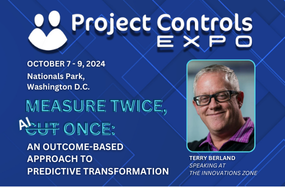
Why Capital Project Tools Fail Without a Strategic Cloud Foundation

Modernisation in the capital projects world has often been equated with one move: lifting and shifting legacy applications—like Primavera P6—into the cloud. For many, this means migrating to cloud application hosting services, hoping that access and flexibility will follow. On the surface, that looks like progress. But if cloud adoption alone was the solution, why are project delays, cost overruns, data silos, and decision-making bottlenecks still so widespread? The hard truth: hosting alone doesn’t equal transformation. Today’s CIOs and project control leaders must rethink cloud strategy—not just as infrastructure, but as a critical enabler of project performance, governance, and cross-enterprise collaboration.
The Real Problem Isn’t Cloud. It’s Fragmentation.
Construction firms have adopted cloud hosting to enhance access, minimise downtime, and consolidate infrastructure costs. But in many cases, this has simply replicated old inefficiencies in a new environment. When hosted applications like scheduling software, cost management tools, and reporting platforms operate in isolation, CIOs and delivery leaders are stuck with:
- Disconnected systems
- Manual data handoffs
- Inconsistent reporting
- Limited real-time visibility
For example, construction scheduling software is often deployed as a standalone solution, which can unintentionally create more silos if not integrated with the broader project controls stack. Fragmented tools create fragmented outcomes—and undermine the very productivity, control, and predictability cloud strategies were meant to deliver.
Why P6 Hosting Alone Is Not a Strategy
Hosting Oracle P6 in the cloud improves availability and uptime. But without native integration with risk, cost, and document management platforms—or with AI/ML analytics tools—P6 becomes an operational silo. You gain remote access but lose cohesive control.
A modern capital project delivery environment demands more:
- Embedded integration across platforms
- Secure, governed workflows that reduce rework
- Live data synchronization for consistent reporting
- Unified visibility from field teams to the executive board
The shift must be from “cloud-hosted applications” to cloud-native, system-wide intelligence.
Navigating the Hybrid Cloud Reality
According to Gartner, over 90% of organisations will operate in hybrid cloud environments by 2027. In capital projects, this means a mix of public cloud hosting, private cloud solutions, and legacy on-prem systems—often with multiple vendors and inconsistent governance.
This complexity can cripple delivery unless hybrid cloud infrastructure is intentionally designed to:
- Enforce consistent SLAs
- Enable end-to-end visibility
- Support real-time collaboration across geographies
- Simplify compliance with industry frameworks and regional regulations
At LoadSpring, we see hybrid not as a compromise, but as a strategic advantage—when correctly governed and aligned with project controls and IT priorities.
Redefining the Capital Project Management System
Let’s reframe the concept. A capital project management system shouldn’t be a loose federation of tools. Simply adopting capital project management software isn’t enough; true transformation comes from how these tools are integrated and governed within a unified environment. It must be an orchestrated ecosystem that enables program-level execution with precision.
A true capital project system should include:
- Centralised access to scheduling, cost, risk, document, and reporting systems
- Full-stack integration, from field data to executive dashboards
- Advanced analytics and AI/ML readiness
- Infrastructure resilience across global time zones and operational models
- User-centric interfaces for stakeholders at every level
This isn’t future-state. It’s available now, when firms move from tools to systems thinking.
Key Metrics for Success: Systems Over Software
For CIOs and IT leaders, success must be measured not just by uptime or license utilization—but by strategic metrics like:
- Reduction in schedule variance
- Time to insight from project data
- Frequency and severity of major incidents
- SLA performance and customer satisfaction
- Platform adoption across internal and partner teams
Modern cloud platforms, such as those delivered by LoadSpring, offer embedded dashboards to track these metrics in real time—ensuring alignment across teams, functions, and geographies.
What CIOs Must Demand Now
- Stop accepting isolated tools as modernisation. Integration is non-negotiable.
- Treat hybrid as a strategic design challenge—not an operational afterthought.
- Don’t let infrastructure lead project strategy. Let project goals define infrastructure.
- Choose partners who understand capital project lifecycles—not just cloud infrastructure.
LoadSpring: Your Partner in Strategic Cloud Enablement
For 25 years, LoadSpring has been trusted by leading construction and infrastructure companies to host, secure, integrate, and optimise the tools they rely on to deliver projects worth billions. Our platform isn’t just a hosting environment—it’s a high-performance, governance-ready cloud ecosystem designed specifically for capital project success.
Because outcomes don’t come from software. They come from systems.
See how LoadSpring accelerates project success across the entire lifecycle. Request a demo today
By Dr. Asif Sharif
Managing Director
LoadSpring Solutions, Ltd.








